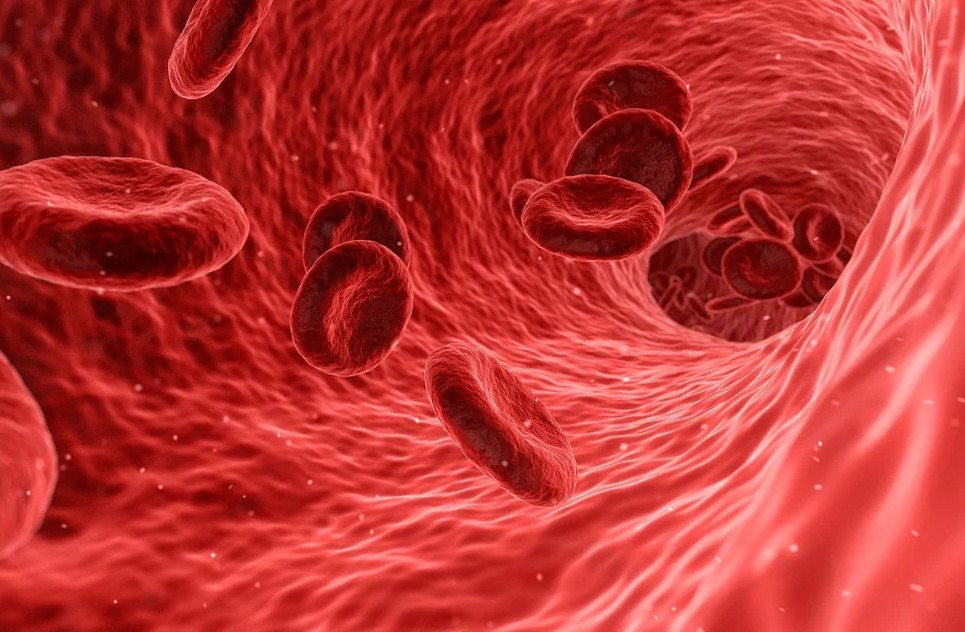Trombosit atau keping darah berperan dalam proses pembekuan darah. Ketika kadar trombosit rendah, Anda akan lebih mudah mengalami bercak dan memar. Kondisi trombosit rendah dikenal dengan trombositopenia dan dapat menyebabkan darah sulit membeku. Apa penyebab trombositopenia dan bagaimana penanganannya? Simak ulasannya berikut ini.
Apa Itu Trombositopenia?
Keping darah merupakan salah satu bagian penting dari komponen darah. Keping darah berfungsi membentuk gumpalan atau menghambat perdarahan. Ketika seseorang tidak memiliki kadar keping darah yang cukup, tubuh akan sulit menghentikan pembekuan darah ketika terluka atau tergores. Pada kondisi cedera serius seperti patah tulang terbuka atau perdarahan otak, hal ini dapat menyebabkan kematian.
Trombosit dalam darah dapat bertahan selama 10 hari. Setelah 10 hari, sumsum tulang akan menghasilkan persediaan trombosit baru utntuk tubuh. Kegagalan sumsum tulang dalam menghasilkan keping darah dapat memicu rendahnya keping darah dalam darah yang dikenal dengan istilah trombositopenia.
Normalnya, kadar trombosit secara umum adalah 150.000-450.000 per mikroliter darah. Kurang dari kadar tersebut, seseorang dapat dikatakan mengalami trombositopenia. Trombositopenia sendiri dapat dibagi menjadi 3 level, yaitu:
- Trombositopenia ringan: Kadar trombosit antara 101.000 dan 140.000 per mikroliter darah
- Trombositopenia sedang: Kadar trombosit antara 51.000 dan 100.000 per mikroliter darah
- Trombositopenia berat: Kadar trombosit antara 51.000 dan 21.000 mikroliter darah
Baca Juga: Inilah Hal-Hal yang Dapat Menyebabkan Trombosit Turun
Penyebab dan Faktor Risiko Trombositopenia
Secara umum penyebab trombositopenia dapat dibagi menjadi tiga kategori, yaitu:
- Sumsum tulang tidak menghasilkan cukup trombosit. Biasa dialami ketika seseorang mengalami penyakit kronis seperti kanker darah seperti leukemia atau limfoma.
- Sumsum tulang menghasilkan cukup trombosit, namun Anda mengalami kondisi yang menyebabkan kadar trombosit mudah rusak atau produksi tromboosit lebih lambat dari proses kerusakan trombosit.
- Trombosit tertahan di limpa. Limpa menyimpan sekitar sepertiga dari persediaan trombosit. Ketika lebih banyak kadar trombosit yang tersimpan di limpa, hal ini dapat menyebabkan kadar trombosit dalam darah menurun.
Beberapa faktor risiko yang menyebabkan seseorang mengalami trombositopenia antara lain:
- Mengonsumsi obat-obatan tertentu. Beberapa jenis obat seperti obat antikejang, heparin dan obat antimalaria dapat merusak trombosit atau memperlambat kecepatan tubuh memproduksi trombosit.
- Terpapar zat kimia beracun. Konsumsi alkohol atau paparan bahan kimia seperti arsenik, benzena, dan pestisida dapat memperlambat produksi trombosit.
- Infeksi virus. Infeksi virus atau bakteri seperti penyakit demam berdarah yang ada terkadang dapat menurunkan jumlah trombosit untuk sementara.
- Kanker darah. Kanker darah seperti limfoma dan leukemia dapat merusak sumsum tulang dan mengganggu produksi trombosit.
- Kondisi autoimun. Penyakit autoimun seperti lupus, rematik, dan kondisi autoimun lainnya dapat menyebabkan sistem kekebalan tubuh menghancurkan trombosit.
- Anemia aplastik. Anemia aplastik mengurangi jumlah sel darah baru yang diproduksi oleh sumsum tulang.
Baca Juga: Daftar Makanan yang Dapat Meningkatkan Trombosit Secara Alami
Gejala Trombositopenia
Kasus trombositopenia ringan baisanya tidak menunjukkan gejala. Sering kali trombositopenia baru diketahui ketika seseorang melakukan pemeriksaan darah lengkap. Beberapa gejala yang mungkin dapat timbul akibat trombositopenia antara lain:
- Kelelahan
- Mimisan
- Jika luka terbuka maka tubuh akan mengeluarkan darah dalam jangka waktu yang lama
- Gusi berdarah
- Muncul darah dalam urine, tinja atau caiaran tubuh lainnya
- Pendarahan menstruasi yang banyak
- Mudah memar dan sulit untuk sembuh
Jika Anda mengalami gejala di atas, sebaiknya segera periksakan ke dokter.
Penanganan trombositopenia dapat disesuaikan dengan penyebabnya. Dokter dapat mengganti obat-obatan yang memicu rendahnya trombosit atau melakukan transfusi darah untuk meningkatkan kadar trombosit dalam darah jika diperlukan.
Pada kondisi parah, trombositopenia dapat berakibat fatal sehingga membutuhkan penanganan khusus. Jika memiliiki pertanyaan seputar trombositopenia, Anda bisa berkonsultasi ke dokter atau manfaatkan fitur konsultasi pada aplikasi Ai Care.
Mau tahu informasi seputar penyakit lainnya? Cek di sini, ya!
- dr Nadia Opmalina
Srakocic. (2023). Symptoms and Causes of Thrombocytopenia (Low Platelet Count). Available from: https://www.healthline.com/health/thrombocytopenia-effects
Martel. J. (2023). Low Platelet Count (Thrombocytopenia). Available from: https://www.healthline.com/health/thrombocytopenia
Mayo Clinic. Thrombocytopenia. (Low Platelet Count). Available from: https://www.mayoclinic.org/diseases-conditions/thrombocytopenia/symptoms-causes/syc-20378293
Cleveland Clinic. Thrombocytopenia. Available from: https://my.clevelandclinic.org/health/diseases/14430-thrombocytopenia
Morgan, K. (2023). Thrombocytopenia (Low Platelet Count). Available from: https://www.webmd.com/a-to-z-guides/thrombocytopenia-symptoms-causes-treatments












